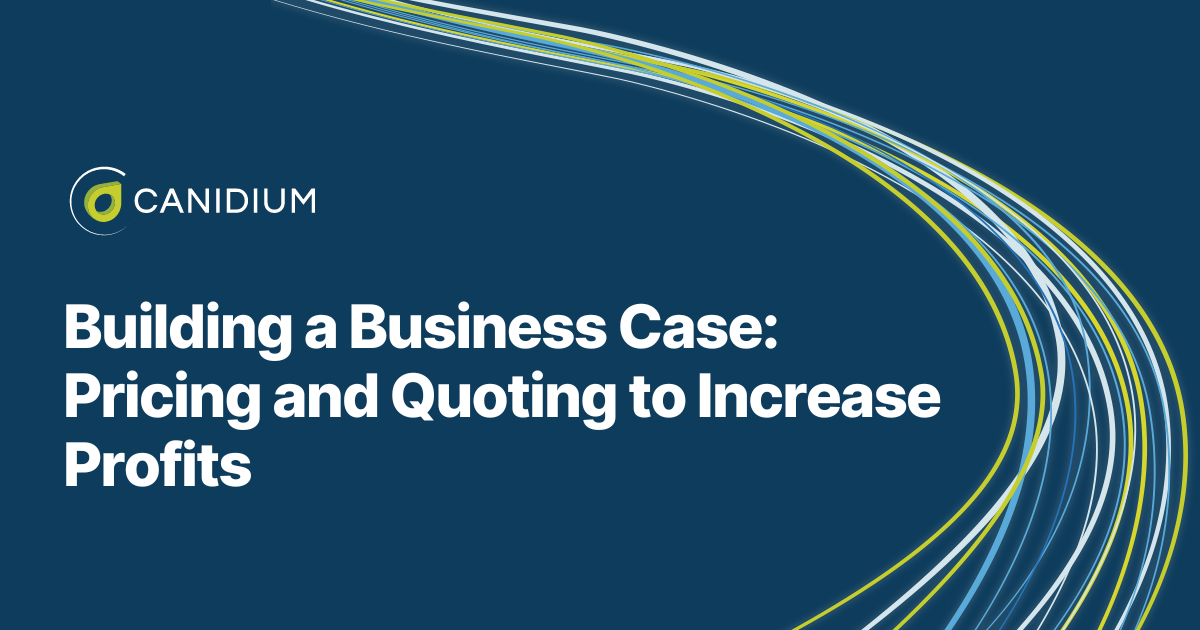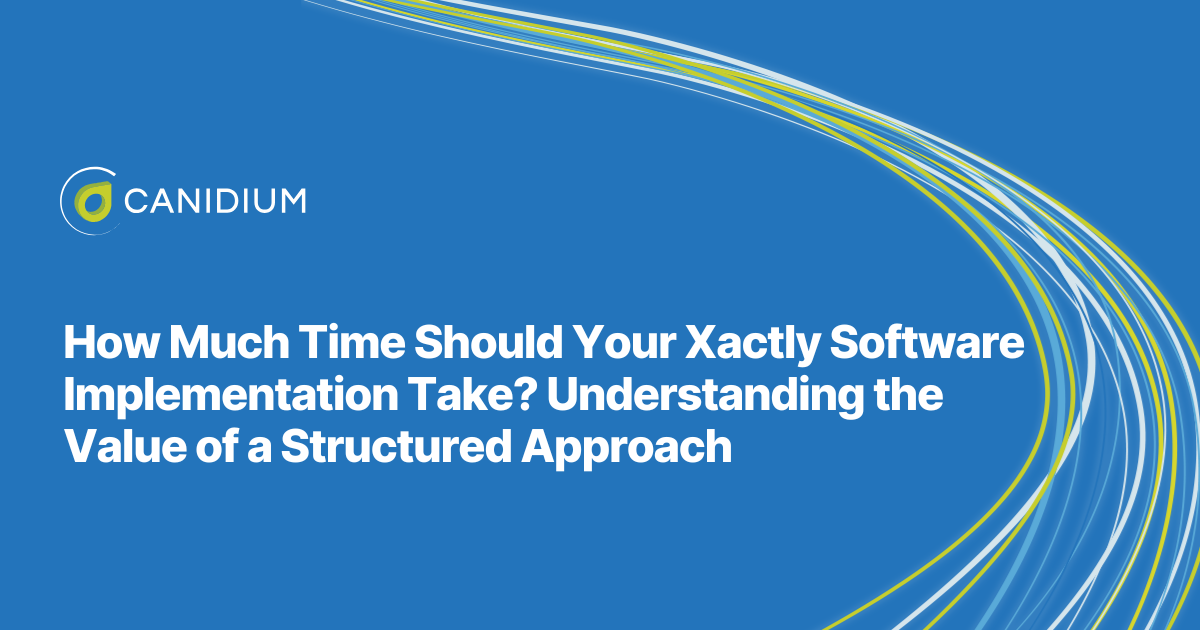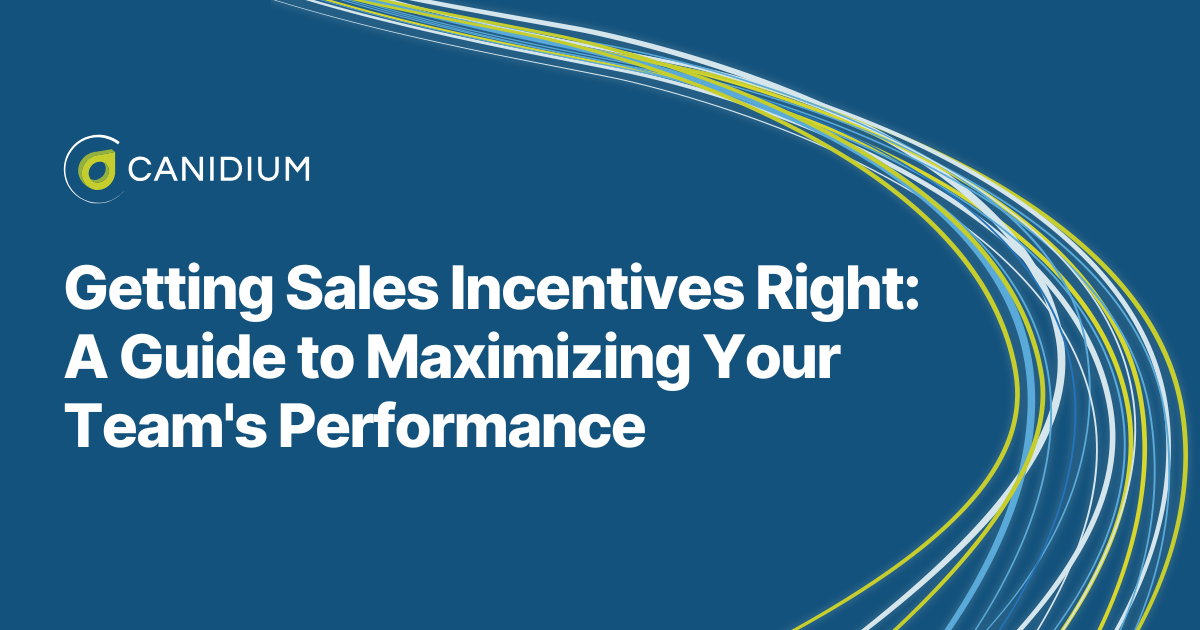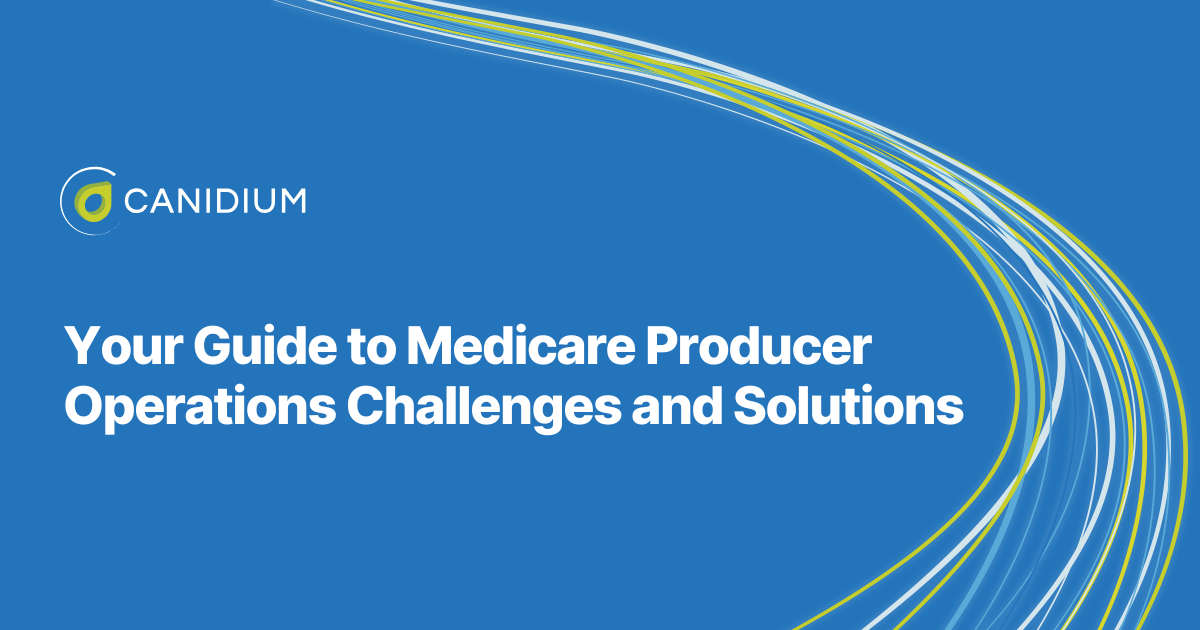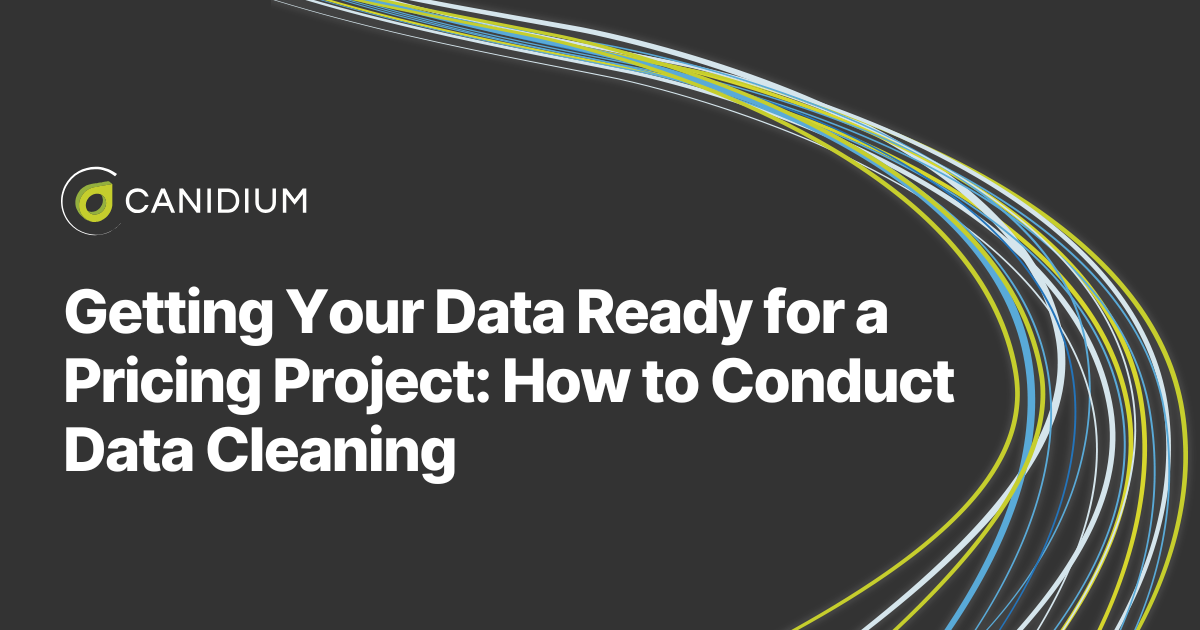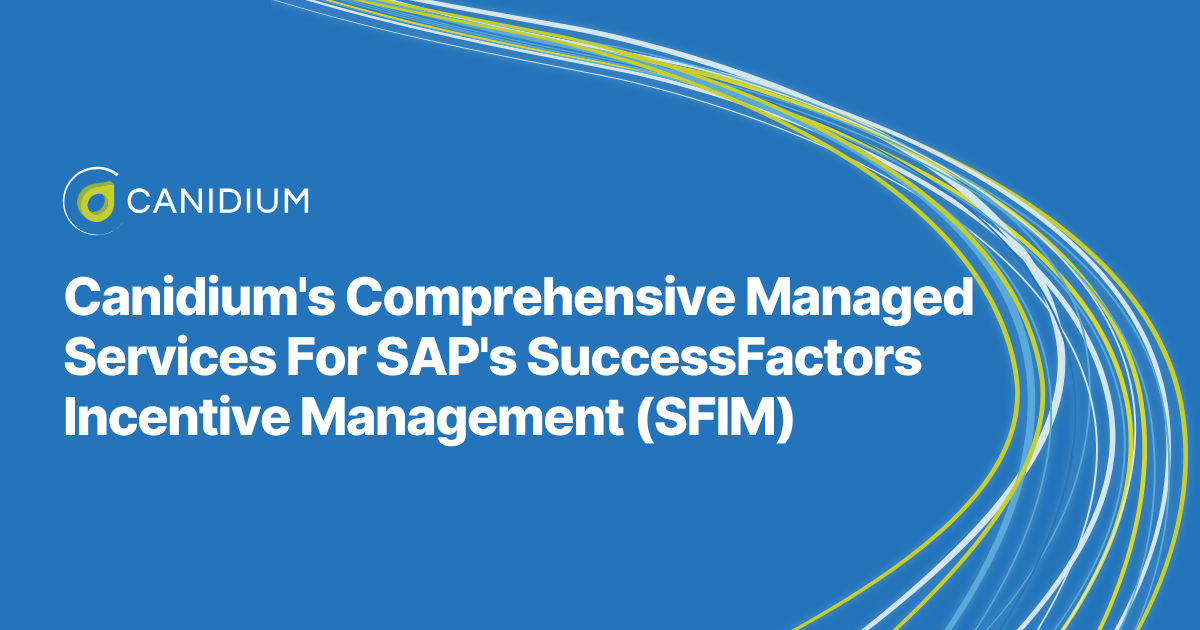As a business leader, half your workday is probably spent brainstorming and planning strategic ways to increase revenue. You may try to break into new markets, launch new products, initiate new marketing campaigns, or any number of other creative attempts to drive profits. However, business leaders often overlook the simplest and most effective way to increase revenue on every sale: practicing better pricing.
At Canidium, our team of experts educates clients on selecting a pricing solution to solve their unique business challenges. We see firsthand how successful businesses leave money on the table because they are unaware of how to implement and use pricing tools.
Leveraging our team's expertise, this article will explain how to solve the most common pricing challenges. It outlines how to increase your revenue with automation. To give you a complete understanding, we go over the following topics:
- Four pricing & quoting opportunities to increase profits
- How to increase revenue with enhanced pricing strategies
- Better pricing tactics to increase daily revenue
4 Pricing & Quoting Opportunities to Increase Profits
Your approach to pricing controls your revenue. Strategic pricing optimization can increase your revenue. Alternatively, neglecting your pricing strategies can cause revenue loss.
Seemingly minor inefficiencies in your pricing strategies can lead to significant revenue losses and missed opportunities. This can be particularly frustrating when you work tirelessly to drive growth and stay competitive. The challenges you face—such as slow quote requests, high price variability, low visibility into win rates, and reliance on manual pricing management—can undermine your best efforts.
To solve your biggest revenue challenges, you often have to look at your business strategies through the lens of potential pricing issues. To help you pinpoint where you may be losing revenue, here are the four most common pricing problems businesses face:
.png?width=1920&height=1080&name=strategies%20(2).png)
Improve Response Times on Quotes
Imagine your sales team receives a request for a quote from a potential customer. They gather the necessary information and begin calculating the price manually. Considering all of the tasks on each sales team member's plate, they cannot respond to every inquiry in less than 24 hours.
In 2020, research found that 67% of buyers expected a quote in less than 24 hours, a 14% annual increase from 53% in 2019. The amount of time buyers expect to receive quotes is shrinking quickly. If you do not find a way to meet this growing demand, you will lose sales to more agile competitors.
The longer it takes for your team to respond, the higher the likelihood the customer will turn to a competitor who can respond faster. This delay in quoting can directly result in lost sales and reduced revenue.
Increase Consistency in Price
Consider a scenario where two different sales reps quote different prices for similar products to various customers. This inconsistency confuses customers and erodes trust in your pricing strategy. High variability in pricing can lead to situations where you're either leaving money on the table by quoting too low or losing deals because your prices are too high.
Customers receiving inconsistent pricing for similar products creates confusion and dissatisfaction. Imagine a loyal customer who discovers they've been charged significantly more than another customer for the same product. This realization can cause customers to believe they were unfairly treated or exploited, damaging their trust and loyalty towards your brand.
At the same time, high variability in pricing often means that some quotes are set too low, leading to potential revenue loss. For example, a sales rep may offer a significant discount to close a deal quickly, not realizing the customer was willing to pay more. This practice leaves money on the table, as you're not capturing the maximum possible value from each sale. Consistently underpricing can cumulatively result in substantial revenue loss over time.
Conversely, setting prices too high can drive potential customers away. Suppose a sales rep quotes a price significantly higher than the market or competitors offer. In that case, customers are likely to seek alternatives. In competitive markets, even a slight price discrepancy can decide a customer's purchasing decision. Losing deals because your prices are too high impacts immediate revenue, market share, and competitive position.
Multiply Win Rates
Think about your last quarter. Do you know exactly how many quotes were won or lost and at what prices? Without clear visibility into your win rates, you're essentially flying blind. You might notice overall revenue trends, but without detailed insights, you can't pinpoint whether your pricing is too aggressive or lenient. This lack of information makes it difficult to adjust your strategies effectively.
Operating without clear visibility into win rates creates significant strategic blind spots. You might be investing heavily in marketing and sales efforts. Still, these efforts could be misdirected without understanding the pricing dynamics that lead to wins and losses. For example, you may focus on acquiring new customers without realizing that your pricing strategy is causing you to lose deals with existing clients. This misalignment can result in wasted resources and missed growth opportunities.
Furthermore, you may miss critical opportunities to increase revenue because you are already profitable. Companies with healthy margins often fail to maximize their revenue potential because they are complacent with their current position.
While profitability is positive, it can mask pricing inefficiencies. You may not realize you are losing deals or missing revenue opportunities by not optimizing pricing. Healthy profit margins should encourage investment in pricing optimization, especially during prosperous times, to prepare for economic downturns.
The potential missed sales from these issues often lead to painfully significant financial losses. Leaving money on the table is not a make-or-break situation in good times. But when inevitable economic downturns occur, you'll wish you had turned over every stone and developed alternate sources of revenue.
Magnify Speed for Price Management
Relying on manual processes for pricing management is inefficient and prone to errors. Without automation technology integrated into your pricing processes, it is impossible to comprehensively and consistently optimize list pricing at scale, resulting in lost sales opportunities and revenue.
At the same time, when burdened with laborious manual processes, sales teams spend more time on administrative tasks rather than building relationships with customers and closing deals. This inefficiency reduces overall productivity and can hinder the growth and scalability of the business.
Moreover, manual pricing processes lack the agility to adapt quickly to market changes. This inflexibility can result in outdated pricing, making your company less competitive and relevant.
How to Increase Revenue With Enhanced Pricing Strategies
Technology is the key to solving all of the pricing challenges listed above. By implementing advanced pricing and CPQ software, you can eliminate manual errors, accelerate the quoting response times, standardize pricing, adapt to market changes, enhance data visibility, improve profitability, and streamline approval workflows. These improvements address common pricing challenges and position your business for sustained revenue growth and competitive advantage. That said, you need the right tools for the job.
You need two separate solutions to comprehensively resolve these challenges and increase your revenue: pricing and CPQ software. To help you understand the scope of these tools, here is a breakdown of what each solution does:
What Is Pricing Software?
Pricing software uses data to set optimal prices, considering market demand, competitor pricing, and costs. It provides deal guidance to your sales teams, ensuring they offer competitive prices aligned with company strategy, leading to more closed deals. Margin analysis helps identify the most profitable customers and products, while dynamic pricing adjusts prices in real time based on market conditions. Furthermore, historical data analysis identifies trends and patterns, aiding in forecasting and pricing strategy.
Pricing solutions also offer automation that can handle tasks like updating prices based on predefined rules, generating quotes instantly, and sending notifications for approval processes. This speeds up the pricing and quoting process and ensures consistency and accuracy, allowing your sales team to focus more on strategic activities and customer interactions.
What Is Configure Price Quote (CPQ) Software?
CPQ software automates the process of configuring products, pricing them, and generating quotes. For example, imagine a customer ordering a pizza online. They start by choosing the pizza size, then select from various toppings, crust types, and extra options like cheese or dipping sauces. As they make each selection, the software ensures all choices are available and compatible, updating the total price in real time. Once the configuration is complete, the customer receives an instant, accurate quote, and can finalize the order all within minutes. The software automatically applies applicable discounts or promotions, ensuring smooth and efficient ordering.
With a CPQ tool, customers can easily configure a complex product, like a customized computer, selecting features and components through a user-friendly interface. The software ensures all selections are compatible and calculates the total price instantly.
These capabilities allow sales reps to generate accurate quotes quickly. For instance, in a B2B scenario, a rep can provide a detailed quote for bulk orders, including discounts and terms, in minutes rather than hours or days.
Implementing Pricing and CPQ Tools Simultaneously to Increase Revenue
You might think it would be too ambitious to initiate two solution implementations simultaneously. You may believe you do not have the people or the time to do both. However, the team and data needed to implement pricing and CPQ solutions are largely the same. In other words, the resources are largely the same and can be dually leveraged during a simultaneous implementation. Plus, the substantial ROI from pricing software can effectively pay for implementing CPQ solutions. Pricing software optimizes prices to increase profit margins and revenue. For instance, even a modest uplift in your pricing results can lead to significant revenue gains. These additional profits can cover the costs of implementing CPQ software, further enhancing your sales process. For many companies, dual pricing and CPQ software implementations are the most cost-effective approaches.
Consider a company that uses pricing software to optimize its product prices, leading to a 2% increase in profit margins. This profit increase can be substantial enough to cover the costs of implementing CPQ software. Once both systems are in place, the company benefits from faster quote generation, consistent pricing, and enhanced customer satisfaction, leading to higher sales and profitability.
Once both solutions are up and running, pricing and CPQ software integration accelerate the sales cycle. Your sales team can quickly generate and approve quotes with automated product configuration and real-time pricing updates. This speed improves customer satisfaction and increases the likelihood of closing deals quickly, boosting your revenue.
Combining these tools also provides comprehensive analytics and reporting capabilities. Pricing software offers insights into profitability and market trends, while CPQ software tracks quote accuracy and sales performance. Together, they provide a holistic view of your pricing and sales strategies, enabling informed decision-making and continuous improvement.
Furthermore, using both solutions ensures that all sales channels and reps provide consistent pricing. Pricing software optimizes prices based on market demand and competitor pricing. In contrast, CPQ software ensures these prices are applied accurately when quoting. This consistency builds customer trust and ensures that you remain competitive in the market.
Practicing Better Pricing to Increase Daily Revenue
Increasing your revenue hinges on mastering your pricing strategies. While minor inefficiencies might seem inconsequential, they can lead to significant revenue losses and missed opportunities. Addressing challenges such as slow quote requests, high price variability, low visibility into win rates, and reliance on manual pricing management is crucial. These issues can undermine your efforts, even if you're working tirelessly to drive growth and stay competitive.
By looking at your business through the lens of pricing optimization, you can pinpoint areas where you may be losing revenue. Implementing advanced pricing and CPQ software offers a comprehensive solution. Pricing software optimizes prices using real-time data, enhances deal guidance, provides margin analysis, and automates updates, ensuring accuracy and efficiency. CPQ software streamlines product configuration, pricing, and quoting, speeding up the sales cycle and improving customer satisfaction.
Together, these tools eliminate manual errors, standardize pricing, adapt to market changes, and provide valuable insights through analytics. The significant ROI from pricing software can fund the implementation of CPQ solutions, making it a cost-effective approach to enhancing your sales process. By integrating these technologies, you can accelerate quote generation, maintain consistent pricing, and make informed decisions, ultimately driving higher sales and profitability. Investing in both pricing and CPQ software positions your business for sustained revenue growth and a competitive advantage.
Now that you have a solid understanding of eliminating pricing problems and increasing your revenue, your next step is to learn how to implement a solution. Start by examining how to choose a software implementation partner to increase revenue here.


